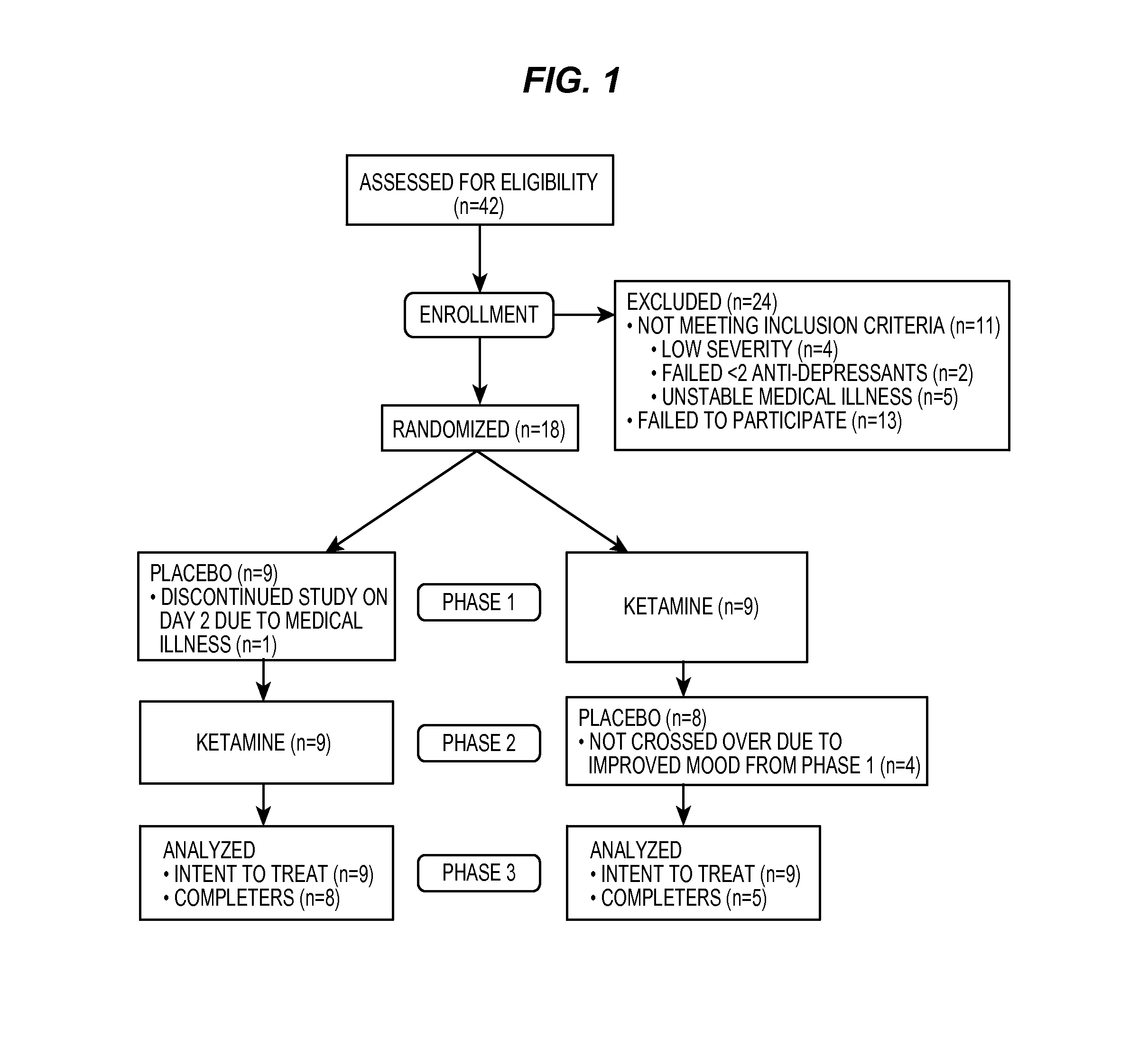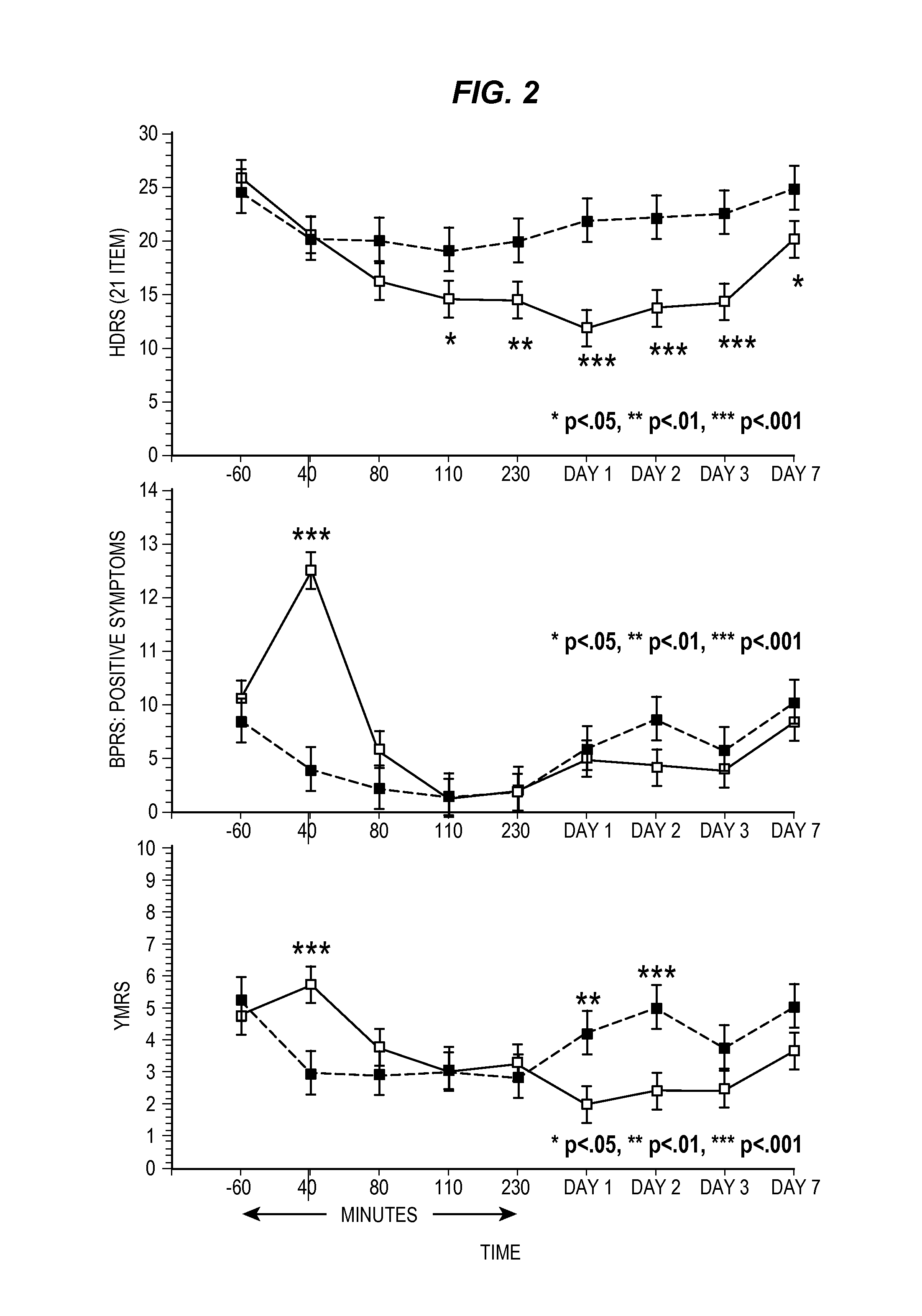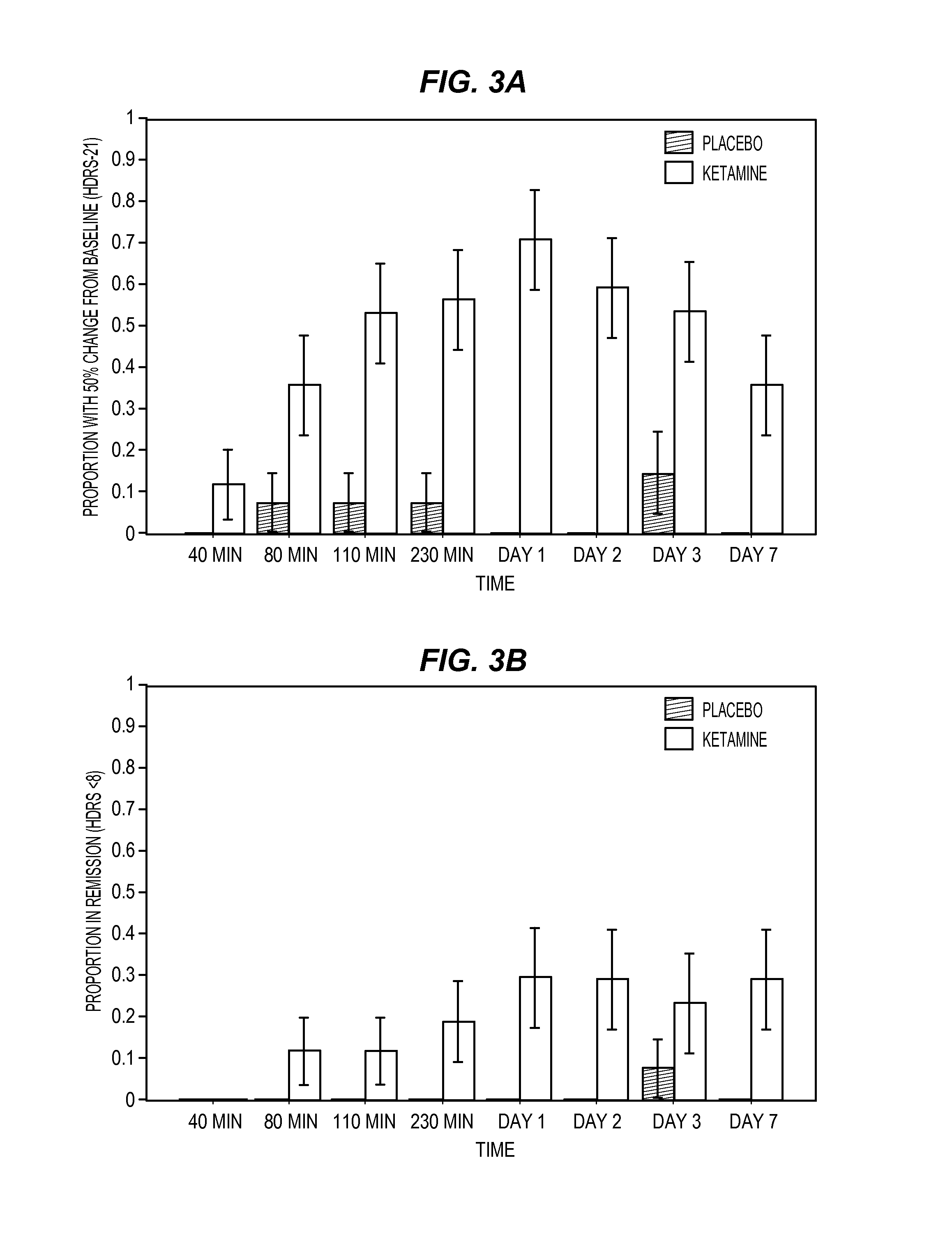Intranasal administration of ketamine to treat depression
a ketamine and intranasal technology, applied in the field of depression treatment methods and compositions, can solve the problems of coronary vascular disease, adverse effects on the prognosis of other medical illnesses, patients continue to suffer from symptoms, and are at risk of self-harm and harm to their personal and professional lives, and achieves convenient drug delivery, low cost, and minor adverse side effects.
- Summary
- Abstract
- Description
- Claims
- Application Information
AI Technical Summary
Benefits of technology
Problems solved by technology
Method used
Image
Examples
example 1
[0124]The following examples are included to demonstrate certain embodiments of the invention. It should be appreciated by those of skill in the art that the techniques disclosed in the examples which follow represent techniques discovered by the inventors to function well in the practice of the invention, and thus are considered to constitute certain aspects for its practice. However, those of skill in the art should, in light of the present disclosure, appreciate that many changes can be made in the specific embodiments which are disclosed and still obtain a like or similar result without departing from the spirit and scope of the invention.
[0125]Methods
[0126]Men and women, ages 18 to 65 years, who were inpatients with a diagnosis of major depressive disorder recurrent without psychotic features as diagnosed by means of the Structured Clinical Interview for Axis I DSM-IV Disorders—Patient Version 28 were eligible to participate. Subjects were required to have a score of ≧18 on the...
example 2
Repeated Administration of a Fixed Dose IV Ketamine
[0156]The following example describes a treatment strategy for treatment-resistant depression involving the repeated administration of ketamine for rapid mood stabilization.
[0157]A fixed IV ketamine dose (0.5 mg / kg infusion over 40 minutes) is repeated for up to six to nine sessions over a two to three week period in hospital. The determination of the number of treatment sessions is based on clinical response and tolerability. Standard pharmacotherapy treatments would be initiated in hospital such that once the final ketamine treatment session is completed; the patient has achieved a therapeutic dosage of an antidepressant for relapse prevention.
example 3
Repeated Administration of a Continuation Dose of IV Ketamine
[0158]The following example describes another treatment strategy for treatment-resistant depression involving the repeated administration of a continuation dose of ketamine for rapid mood stabilization.
[0159]All patients would initiate IV ketamine at the dose of 0.5 mg / kg at a rate of 1 mg / min, with continued titration over 40 minutes based on tolerability. At the first treatment, a tolerability threshold is determined using an empirical titration procedure based on the presence of psychotic side effects. he individualized optimal tolerated dose would serve as the continuation dosage for repeated treatments as described in Example 2 above. For patients who respond to IV ketamine at the 24 hour assessment, the continuation dose would be 20% reduced from the dose associated with psychotic side effects. If a patient did not have any psychotic side effects and is a responder at 24 hours, then the standard dose of 0.5 mg / kg is ...
PUM
| Property | Measurement | Unit |
|---|---|---|
| time period | aaaaa | aaaaa |
| body weight | aaaaa | aaaaa |
| mass median dynamic diameter | aaaaa | aaaaa |
Abstract
Description
Claims
Application Information
 Login to View More
Login to View More - R&D
- Intellectual Property
- Life Sciences
- Materials
- Tech Scout
- Unparalleled Data Quality
- Higher Quality Content
- 60% Fewer Hallucinations
Browse by: Latest US Patents, China's latest patents, Technical Efficacy Thesaurus, Application Domain, Technology Topic, Popular Technical Reports.
© 2025 PatSnap. All rights reserved.Legal|Privacy policy|Modern Slavery Act Transparency Statement|Sitemap|About US| Contact US: help@patsnap.com



